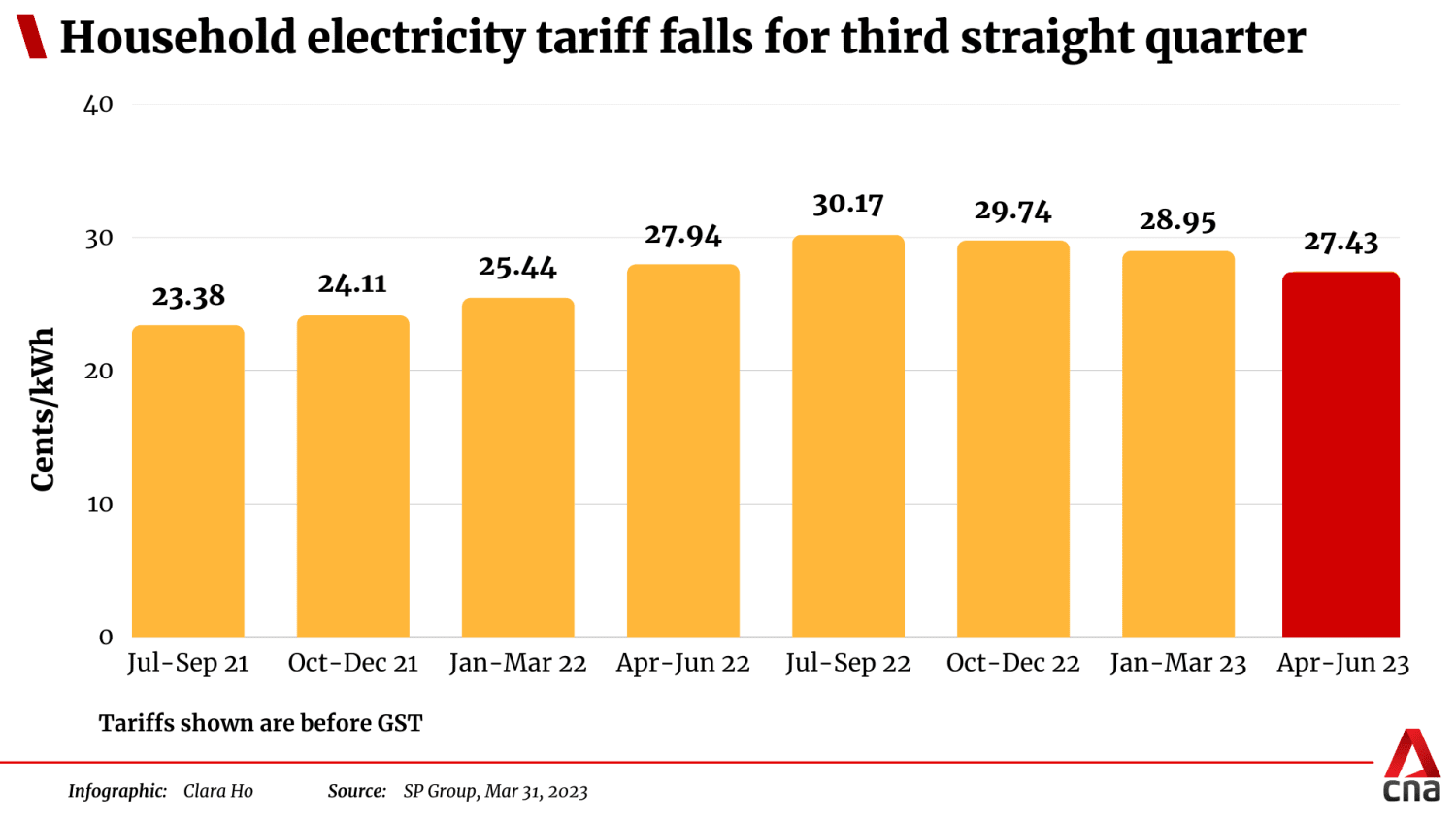SINGAPORE: SP Group's electricity tariff will fall by an average of 5.4 per cent in the second quarter of this year, SP Group said on Friday (Mar 31).
This translates to a decrease of about 1.51 cents per kWh before Goods and Services Tax (GST), the utilities provider said.
SP Group said the decrease in the tariff was due to lower energy costs compared with the previous quarter.
This is the third consecutive quarter that the electricity tariff has fallen, after six consecutive quarters of increase from April 2021 to September 2022.
For households, the electricity tariff before GST in the second quarter of this year will decrease to 27.43 cents per kWh from 28.95 cents per kWh in the preceding quarter.
The average monthly electricity bill for families living in four-room Housing and Development Board (HDB) flats will decrease by S$4.69 before GST, said SP Group.

SP Group owns and operates Singapore's electricity network, and has about 1.6 million industrial, commercial and residential customers.
The utilities provider reviews the electricity tariffs every quarter based on guidelines set by the Energy Market Authority (EMA).
The electricity tariff consists of four components – energy costs paid to the generation companies, network costs and market support services fees paid to SP Group, as well as market administration and power system operation fees paid to the energy market company and power system operator.
The energy costs component is adjusted quarterly to reflect the changes in the cost of fuel and power generation. The fuel cost is the cost of imported natural gas, which is tied to oil prices by commercial contracts.
The cost of power generation covers mainly the costs of operating the power stations, such as the manpower and maintenance costs, as well as the capital cost of the stations.


Continue reading...
This translates to a decrease of about 1.51 cents per kWh before Goods and Services Tax (GST), the utilities provider said.
SP Group said the decrease in the tariff was due to lower energy costs compared with the previous quarter.
This is the third consecutive quarter that the electricity tariff has fallen, after six consecutive quarters of increase from April 2021 to September 2022.
For households, the electricity tariff before GST in the second quarter of this year will decrease to 27.43 cents per kWh from 28.95 cents per kWh in the preceding quarter.
The average monthly electricity bill for families living in four-room Housing and Development Board (HDB) flats will decrease by S$4.69 before GST, said SP Group.

SP Group owns and operates Singapore's electricity network, and has about 1.6 million industrial, commercial and residential customers.
The utilities provider reviews the electricity tariffs every quarter based on guidelines set by the Energy Market Authority (EMA).
The electricity tariff consists of four components – energy costs paid to the generation companies, network costs and market support services fees paid to SP Group, as well as market administration and power system operation fees paid to the energy market company and power system operator.
The energy costs component is adjusted quarterly to reflect the changes in the cost of fuel and power generation. The fuel cost is the cost of imported natural gas, which is tied to oil prices by commercial contracts.
The cost of power generation covers mainly the costs of operating the power stations, such as the manpower and maintenance costs, as well as the capital cost of the stations.
Related:


Continue reading...


